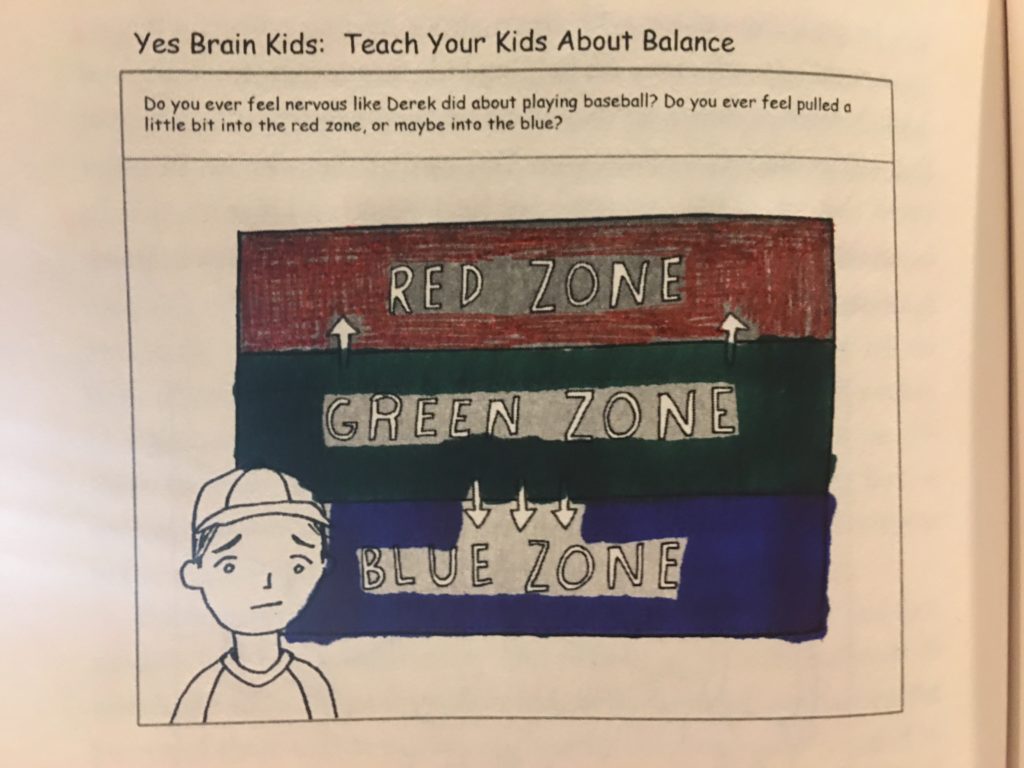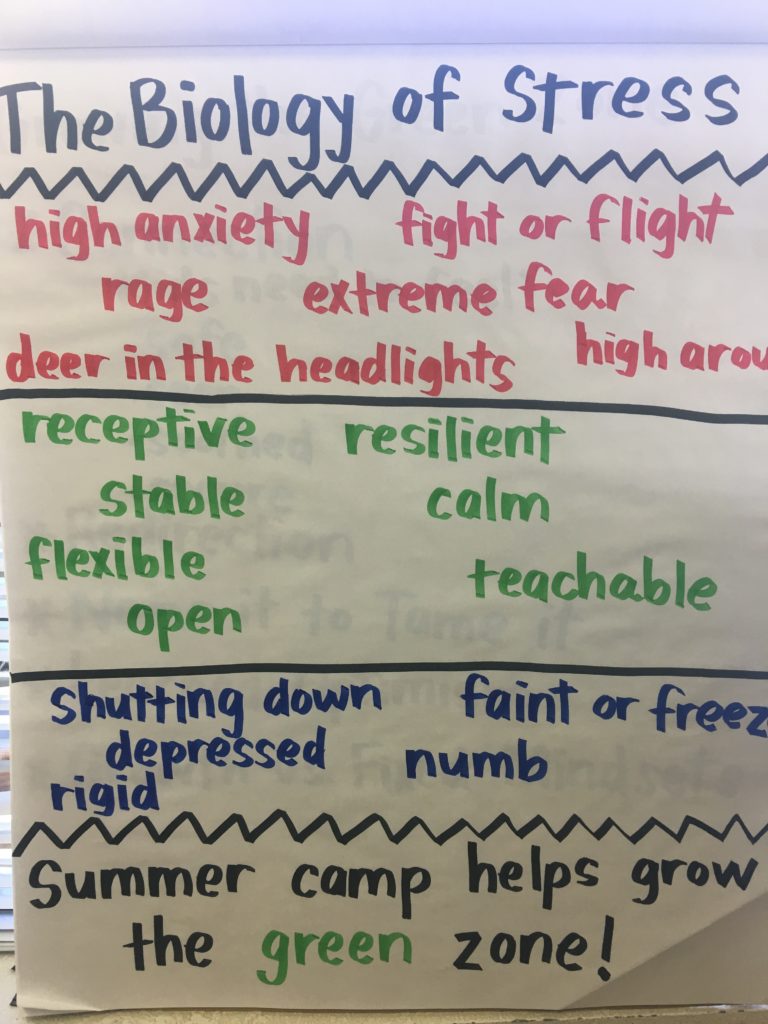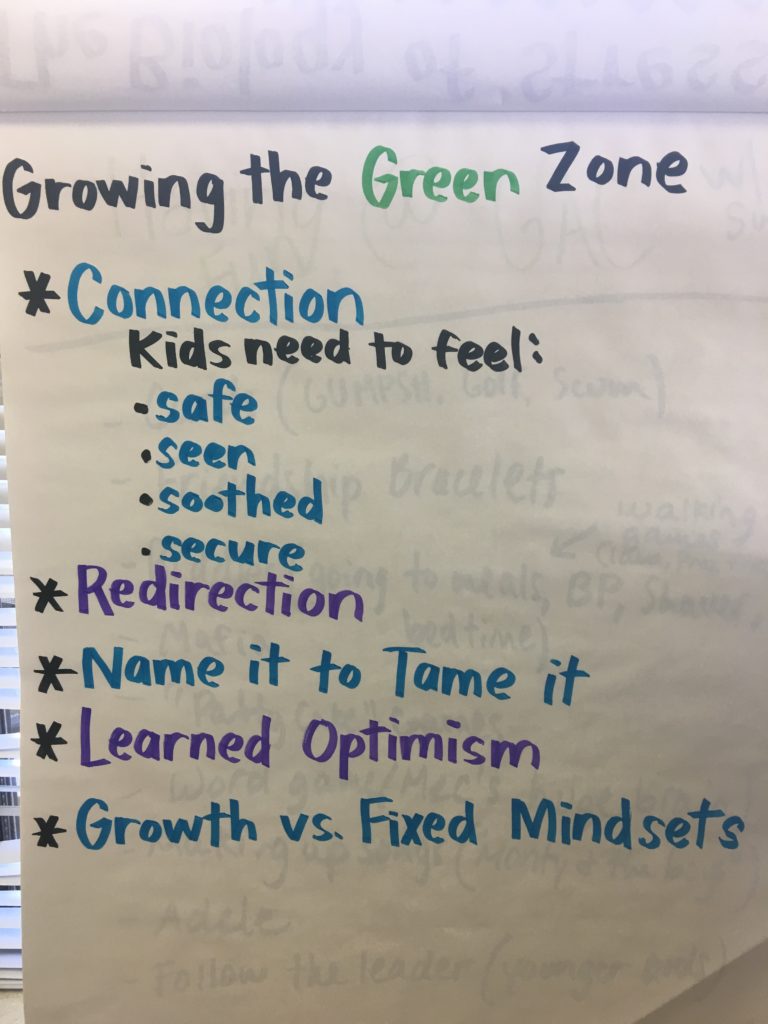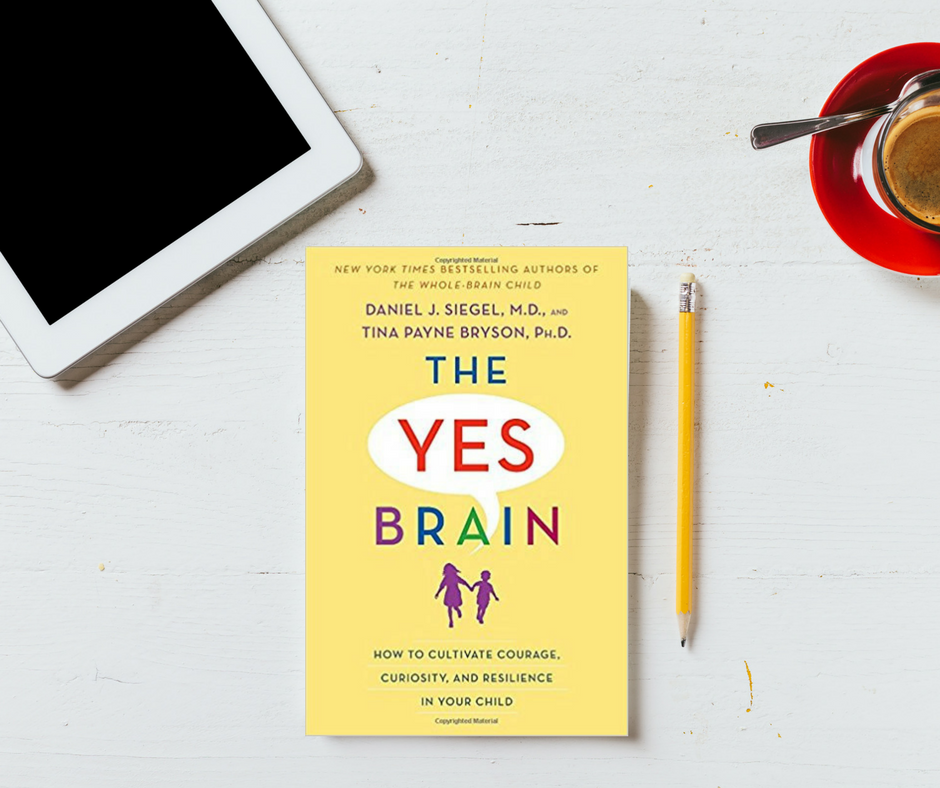Helping Kids Find Their “Green Zone” (and Finding our Own!)

The simple concept of red, green, and blue zones from The Yes Brain has stuck with me and is helpful to anyone who is a human being or works with them.
The red, blue, and green zones describe the emotional characteristics or states our children (and we!) are in at any given time. The “green zone” is the state we want to help our children be in as much as possible and to help them learn to return to when they enter the red or blue zones. When our children are in that wonderful green zone, they are receptive, resilient, stable, calm, flexible, open, and teachable — all the traits them allow them to be their best selves.
When our kids feel and exhibit high anxiety, fight or flight, rage, extreme fear, a “deer in the headlights, or high arousal, they are in the “red zone.” It’s easy to remember since we all have experienced the feeling of “seeing red” or feeling extremely angry.
Some kids who are dysregulated or out of their green zone don’t go into the “red zone.” Instead, they may go to the “blue zone.” They’re in the blue zone when exhibiting: shutting down, being depressed, going rigid, fainting, freezing, or appearing numb.
Characteristics of the Red, Green, & Blue Zones
The Red Zone
• High anxiety
• Fight or flight
• Rage
• Extreme fear
• Deer in the headlights
• High arousal
The Green Zone
• Receptive
• Resilient
• Stable
• Calm
• Flexible
• Open
• Teachable
The Blue Zone
• Shutting down
• Depressed
• Rigid
• Faint or freeze
• Numb

Sloan Walsh’s camp counselor training flip chart.
Understanding what’s happening when kids respond inappropriately (outbursts, tantrums, biting, freezing, etc.) is helpful as we guide them to expand their green zone and learn how to deal with different emotions and experiences.
How to Expand Kids’ “Green Zones”
Some people (kids and adults) have a small “green zone.” Small inconveniences or interpersonal slights can send them into the “red zone” without warning.
What can you do if your kid has a small green zone?
- Stay in Your Own Green Zone
Focus on keeping yourself in your own green zone so that you can model for and support your child to get back into theirs. - Connection
Kids need to feel:
• Safe
• Seen
• Soothed
• Secure
How can you help them feel connection? Empathize with their emotion and connect with them physically. Staying calm (stay in your green zone!), get down low on the floor, below their eye level. Offer comfort and connection (a hug, a pat on the back or shoulder). - Name it to Tame it
Acknowledge their emotion,
“I can see that you’re angry that your screen time is over.”
” I can see that you’re frustrated that she wouldn’t share that toy.”
” I can see that you’re embarrassed you couldn’t figure out how to climb that rock.”
” I can see that you’re feeling lonely because they wouldn’t let you join the game.”
Naming the emotion they might be feeling helps tame the emotion. - Redirection
Wait until the child is back in their own green zone to talk about their inappropriate behavior or response. No learning can occur while a child is in their red or blue zone, so they will not hear or understand anything you’re saying. Connect with your child and help get them back into their green zone before you redirect their behavior.

I’ve found it helpful to use this color language, and have found myself (several times in the past few weeks) turning to a co-worker and saying (when feeling frustration or exhaustion or some other negative emotion), “I’m feeling like I’m going into my red zone.”
Just articulating that I can feel myself moving out of my own green zone makes me feel better. By expressing it, and having a laugh about it with a friend, I can get myself back into the “green” without my red volcano erupting!
This summer, I’m going to continue reminding our staff to think about inappropriate behavior by keeping campers’ and their own zones in mind.
Our focus is using the tools we’ve learned (Staying in our Own Green Zone, Connection, Redirection, Name it to Tame it, and Redirection) to help kids get back into their green zone.
Our goal is also to help skills they need to expand their green zone and be able to respond from a “green zone” to the interpersonal challenges that will always be part of human relationships.
Thinking about children’s behavioral responses to different events and triggers provide a clue to the size of their green zone and can help us, as adult mentor, camp counselors, or parents, help them grow their green zone.
Related/Resources
Ep. 95: Raising a Yes Brain Child with Tina Payne Bryson
The Yes Brain: How to Cultivate Courage, Curiosity, and Resilience in Your Child
Mini Child Development Course (Vimeo)
Ep. 20: The Yes Brain with Tina Payne Bryson (podcast episode)
The Yes Brain (Facebook Live interview) with Tina Payne Bryson

